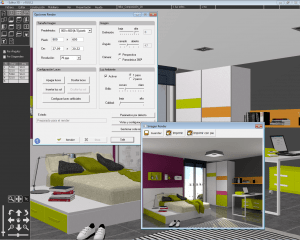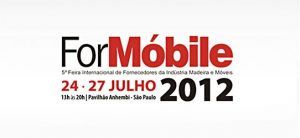Implementation and daily use of an ERP
The next logical step is the implantation phase, for which it is essential to define each stage, bearing in mind the importance of making a gradual transition to replace the existing tools (whether it is a replacement total or partial) or implement a solution on an empty field, with no ERP installed yet. The approach will not be the same according to the situations, with for each of them levers and constraints, but for all, with one and the same final purpose: improving the current situation.
In the case where one solution replaces another, the different phases of the implementation must be coordinated very precisely in order to avoid disturbing the production and thus to alleviate the inevitable repercussions caused by such a change. It may be necessary to perform a partial start-up, for example to complete a resource or a production line, by making the two systems co-exist during a given period. It is thus possible to distribute the flow in both systems, until the desired results are obtained. The objective is to succeed in maintaining the existing level of service before the implementation of the new system, and then to improve it with the tools put in place.
Once the new system is installed and integrated into a part of the cycle, the operation can be repeated on another section until the integration is complete.
The other option is to achieve full integration right from the start. This mode of implementation is more suitable for small structures having a single production line or a manufacturing volume making it possible to easily absorb any initial errors. Logically, the larger the volumes , the greater the risk of error in case of adjustment problems or start-up errors, and therefore the greater the attention and the organization dedicated to the project.
If the solution is implemented within a factory that was running without ERP, or where there was no Manufacturing Executing System (MES), the implementation phase may be similar to the one detailed above: it is possible to carry out a partial or complete installation. But in this case, the risk of error is minor since one goes directly from a zero or near zero computerized system to an advanced computerized system. Although this may seem simpler at first glance, the difficulty lies in the fact that the company is not used to using a computer system, which can create disruptions.
In both situations, it is therefore necessary to take into account parameters that do not necessarily flow from source: here, the internal teams. Employees who are accustomed to working in a methodology and using certain tools may be reluctant to adopt a new solution, whether it is a substitution or a creation. Implementation of a new solution may be perceived as harmful or create competition between employees. It is imperative that this parameter be taken into account and that it is essential to prepare the teams for the implementation of the new system, to answer their questions and to involve them in the project, thus creating a climate of confidence. Training the teams is also crucial to ensure the success of the project. Another important point, irrespective of whether the teams have accepted the implementation of the new system, is to change work habits. There is nothing more difficult to modify than habits. What you have gone through as a company or production manager to make a decision and accept change will be experienced in the same way by the employees of your company, whatever their hierarchical level – and this also applies to the plant operators. The only difference is that these collaborators did not participate in the decision-making process and therefore did not choose this change a priori.
Once the system in place begins to show positive results and improvements are noted on a daily basis, doubts evaporate and change occurs naturally. It should be noted that any type of change requires at least 3 weeks of adaptation. For example, at home, when changing a place the light switch, it takes an average of 3 weeks to accept the idea of the change and integrate the final location. Once this period has passed, we do not even have to think where the switch is because the information has been acquired. This rule applies to any situation that requires a change. But of course, implementing a MES or an ERP in a factory is much more complex than changing a switch …
The goal of Simsa team is to make easier this transition by accompanying users and help defining the process-flow. If the initial phase of the analysis made it possible to define a roadmap, the objective of the implementation phase is to apply the theory.
In the implementation phase, two steps must be followed: firstly, training the teams who will have to be autonomous to configure the software according to the specific needs and thus to start the start-up phase. Then, once the software is ready for use, you must train the end users who will use the system on a daily basis.
To return to the first phase, a certain number of steps must be respected, starting with the constitution of the technical catalogue, in order to progress step by step until a complete circuit is obtained. For example, in TeoWin, as for the majority of furniture manufacturers, everything shares the furniture. We can say that TeoWin gives the power back to the technical office which will define the rules and characteristics of the product, so that the whole process is developed until the end of the loop.
The first circuit could go as far as connection to the machines and then start to set up the workshop and the workstations. Concerning machines, Simsa has a team of developers whose main task is to ensure a direct connection using the native language of the machine. We are now compatible with about 100 machines and we master the technology to create new connections if necessary, by interacting directly with the software of the machines (or with the machine supervisors). We are also able to develop connections with other software, for example when it comes to linking our ERP with the local accounting of a given country.
To transmit knowledge, we usually work remotely. We do not need to make permanent physical contact with the technicians responsible for integrating the data into the new system. Our philosophy is always to favor the transmission of knowledge so that our customers can evolve autonomously. Working remotely, however, requires us to conduct regular meetings or sometimes to move to the client, for example to validate certain key steps.
Then comes the test phase that takes place before start-up and ensures that everything is working properly. The tests are carried out by both the company and Simsa. This is one of the reasons why it seems essential to us to maintain a privileged relationship with our customers. Beyond selling an ERP, we are committed to offering a service of impeccable quality.
If the first phase is to implement our solution, with the help of experts in set-up, we must then train the end users who will make the software their daily work tool and for which it is therefore essential that the software works correctly. This is why we provide distance or, in some cases, face-to-face training.
Once the system is implemented, as the crisis phase of change is over and the situation begins to normalize, we move on to the follow-up phase. We then analyze the results of the ERP, make the necessary adjustments and identify any future improvements, relying on the potential of the new TeoWin system installed, until fully deploying all the functionalities defined with Simsa’ teams , at the beginning of the relationship and during the analysis phase.
With these few lines, we tried to reflect the reality that exists behind an ERP, and more generally, the need of the change. It all starts with an idea, an awareness or a dream. Making this dream come true demands work, involvement, motivation, but also knowing how to surround itself with the right partners. In this sense, the chosen solution must not only be specialized in the sector, in order to manage the multiple variables of the furniture, but it must also provide a high level of service. If the factory is assimilated to a human body, where each production line or zone would be a series of organs supporting a number of specific and complementary tasks, then the software would be the brain: an entity capable of orchestrating the whole, dividing tasks and preventing them from interfering with each other or coming into conflict, enjoying a global vision and assuming a role as a decision-making center. In other words, the ERP is the masterpiece of the factory, and the company.
Giving as much power to a single solution requires trusting the partner with whom we decide to work, and, as we have just seen, going through all the steps involved in an implementation, finally finding that the system works and that it significantly improves productivity, thus enabling the company that has made the bet of change to project itself into the future.
All this work is necessary for the implementation of an ERP. It is a collaborative work, which requires total empathy with the publisher of the software. That is why Simsa always gives priority to its customers and strives to establish a close working relationship with them, with personalized attention. In any case, before any new collaboration, it is customary to have a preliminary study or a presentation of TeoWin done by a Simsa collaborator, in order to express the specific needs and detail the nature of the project. Simsa always provides a preliminary estimate without obligation, in order to give an idea of the overall cost of the implementation of its ERP. In the same way, for very specific projects and tailor-made or whenever it will be necessary to adapt the software or develop new functionalities that will be added to the generic core, we recommend carrying out a preliminary study.
Any change begins with the expression of a need and an awareness. Changing means evolving and growing up. Bet on the change!









